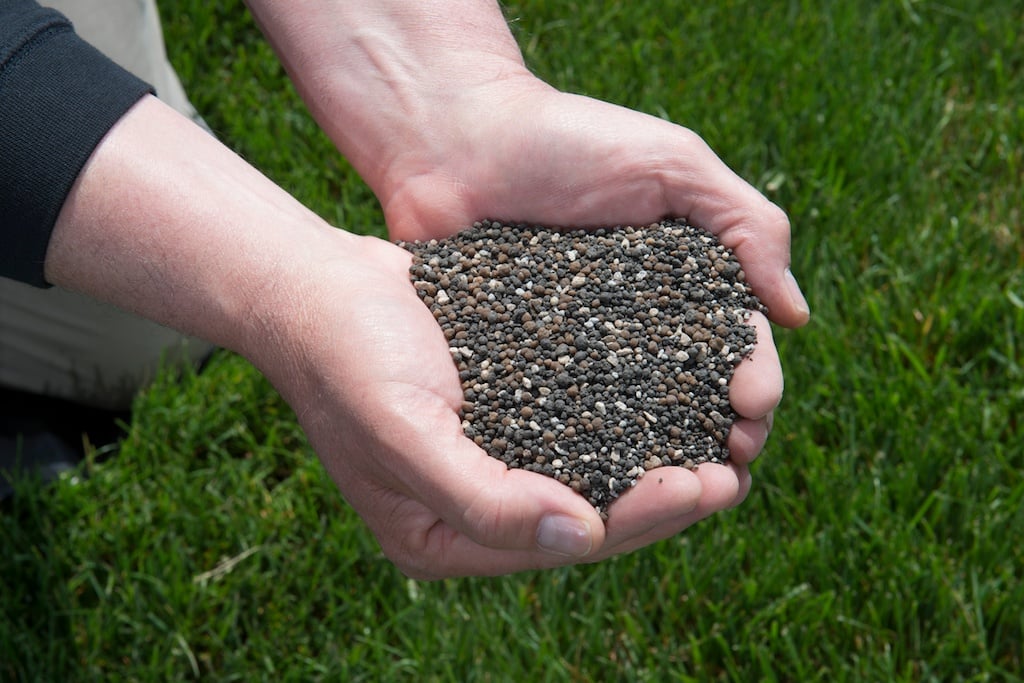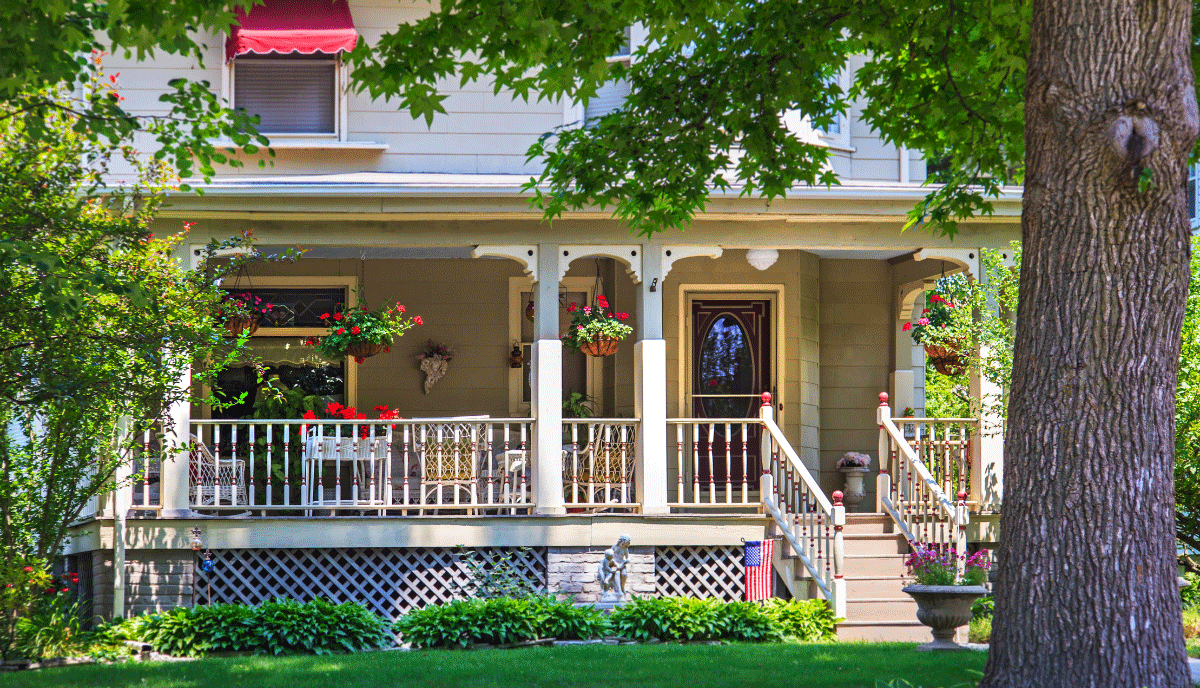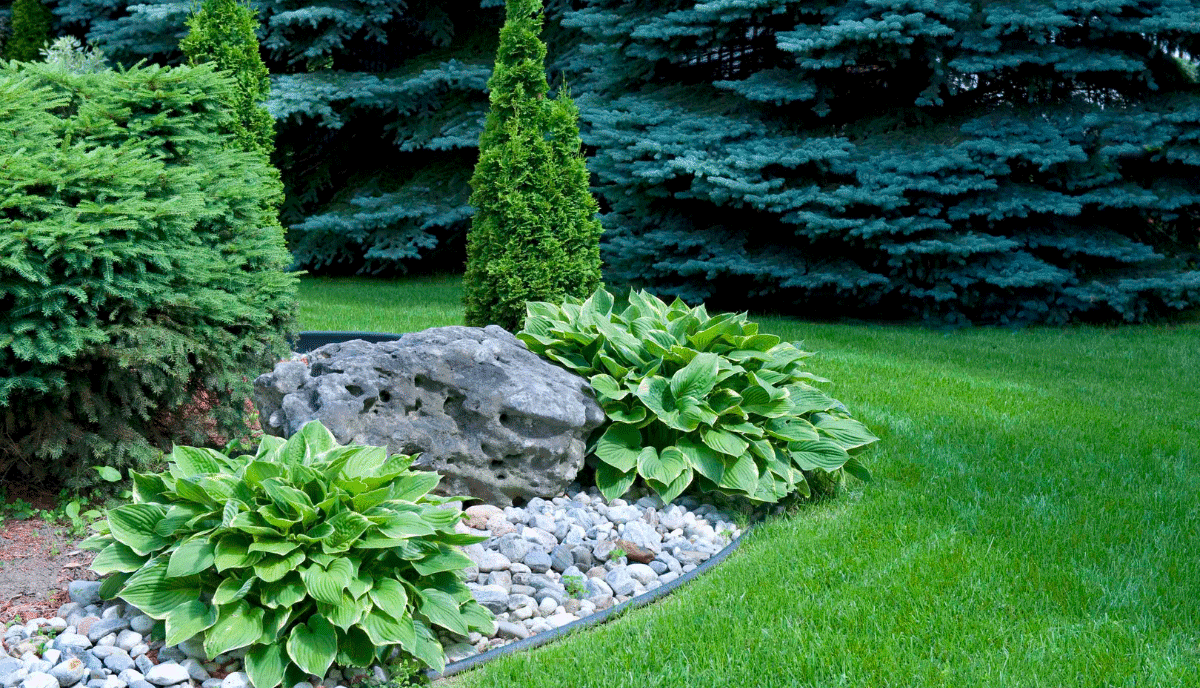
Hostas are a gardener’s dream. They are known for their striking foliage, with leaves ranging from white and yellow to deep green, but it is their versatility and hardiness that steals the show. Do you have a shady spot where many other plants struggle? Hostas. Do you want something with long-lasting foliage and pretty flowers that attract pollinators? Hostas.
Need something to go with other shade-loving plants? Hostas. These herbaceous perennials come in many sizes, from delicate miniatures to enormous plants. You can use them as fillers, accents, borders or focal points to turn your ordinary garden into a lush, polished haven.
Here are some beautiful hosta landscaping ideas that will help you use them effectively, whether you have a sprawling garden or a simple corner of the yard that needs some greenery:
1. Hostas as edging and borders
Hostas make excellent framing plants. They transform the look of flower beds, driveways, garden paths and anywhere else in your garden that needs a border or border with their thick foliage. They have a natural habit of growing in mounds that define spaces without the need for artificial or additional barriers.
YoIf brick and stone are too hard for you, use small varieties of hosta that will spread over your walkways for a softer aesthetic. For a dynamic or organic look, mix different shades of hostas and pair them with groundcovers like Jenny and vinca to create a living border that changes slightly as the seasons pass. Complete the picture with solar lights between the plants to highlight the foliage at night.
2. Hostas mixed with ferns
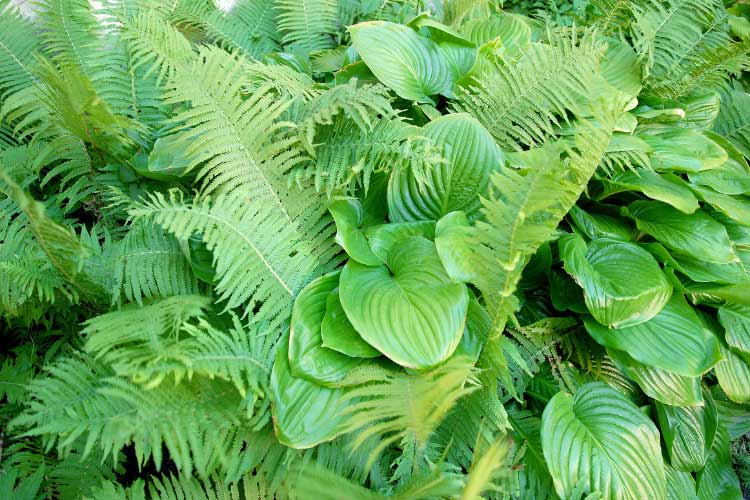
Ferns and hostas go together like bees and pollen. Of all the beautiful hosta landscaping ideas, this is the one that will make your hostas the happiest. Together, these two plants create a classic shade and garden combination that brings wide, bold leaves and fine, feathery textures to your landscape.
Hostas are responsible for anchoring the garden, while ferns provide lightness and fluidity. It’s a natural combination that can transform your boring landscape into a forest-inspired wonder, especially if you give them the right conditions. Both need moist, shady conditions and require little maintenance once established.
3. Hostas under trees
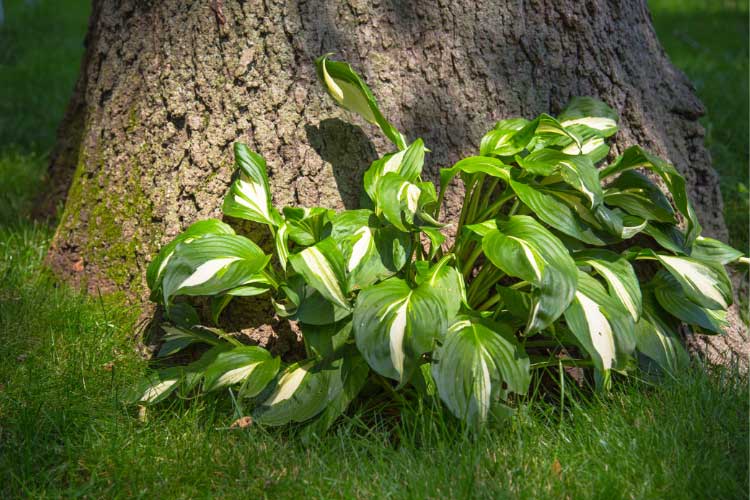
Sometimes areas under trees are nothing more than a challenge, because many plants struggle with shady areas where they have to compete with tree roots. Hostas, however, thrive in these conditions. You can also mix in other shade-tolerant companions like astilbes or heucheras for a pop of color.
Arrange hostas in irregular clumps rather than strict circles or rows for a natural look. Its leaves will add fullness and cover bare ground for a smooth, polished transition between the rough trunk and the ground. To retain moisture and ensure your hostas don’t compete too much with the roots, add mulch around the base.
4. Hostas Liner Fences
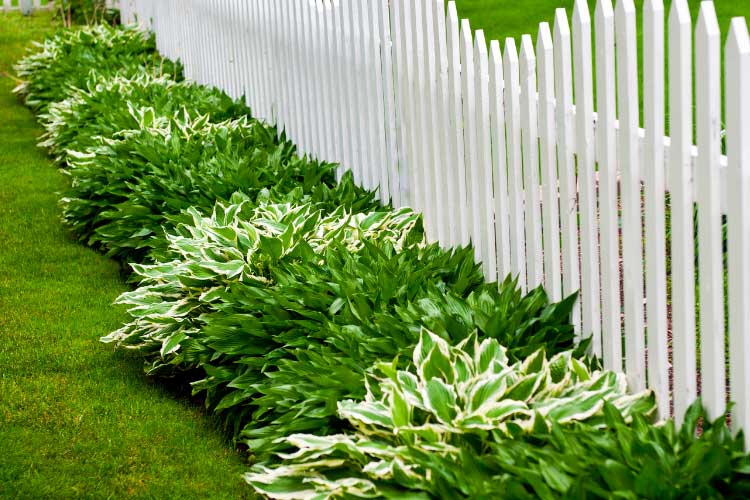
Fences are certainly not known for being gorgeous decorative features or focal points. In fact, they can look stark and unattractive, ruining the entire look of your property. Whether you have wood, chain link, or even stone fencing, a touch of greenery can make a big difference. Large hostas create a dense wall of foliage that can hide that unsightly fence, while smaller types are a better choice if you plant them to complement the fence rather than hide it.
The deep greens and golds of hostas add interest and break up the monotony of long, boring fences, while softening edges and attracting pollinators. Arrange them at different heights for a layered effect or add other shade-loving perennials for a burst of seasonal color.
5. Hostas as filler plants
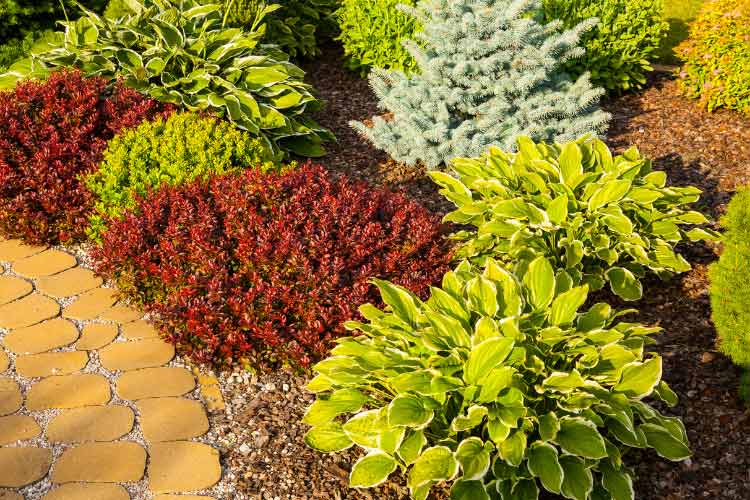
Whether you think they can’t handle the attention or prefer a variety of elements in your garden, hostas can also work well as filler plants. They perfectly unite different areas of a garden because they do not leave open and uncomfortable spaces and at the same time they complement the existing vegetation.
Hostas thrive in shade, making them ideal for spaces where sun-loving plants do not. Plant them anywhere from your flower beds to the spaces between large shrubs and showy trees, or use them as temporary solutions while your young plants are still growing.
6. Hostas surrounding water sources
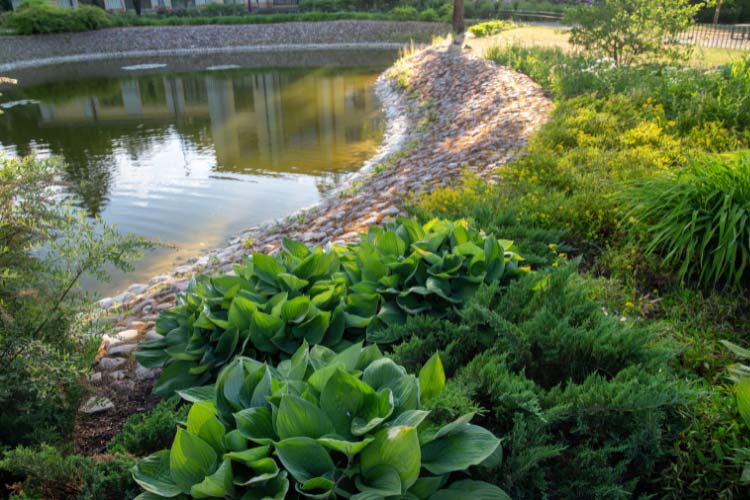
Water features like ponds, birdbaths, and trickling fountains already draw attention, but you can enhance their beauty even more by surrounding them with hostas. The textured leaves provide a striking contrast to the smooth water, softening the hard edges and integrating the reflective surface into the landscape.
Frame your pond with large hostas, border your birdbath with smaller varieties, or surround your fountain with medium-sized hostas. Add shade-loving flowers, such as astilbes or hydrangeas, to the design, or mix in ornamental grasses and moss for a natural, organic look.
7. Hostas around patios
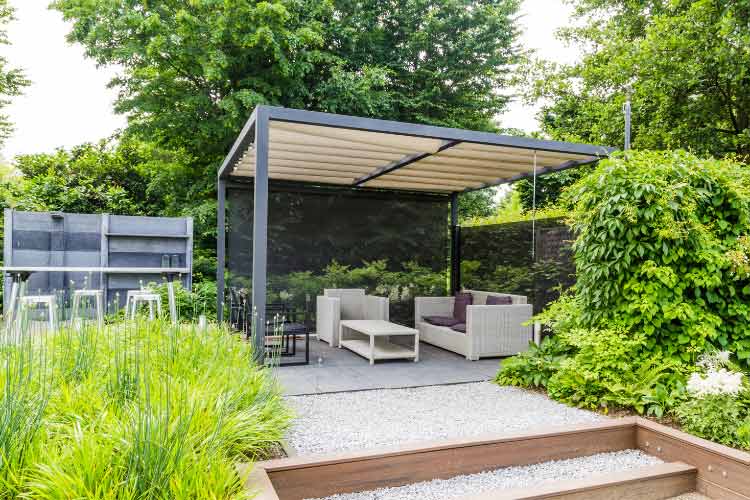
A couple of beautiful hosta landscaping ideas incorporate permanent structures and accessories because they work great to soften the rough edges of stone, concrete, metal and wood. Hostas planted directly into the ground around the perimeter of your patio will allow them to blend into the landscape, while large containers will allow you to move them around.
Place smaller hostas near your seating areas to freshen the air and use larger varieties to provide privacy for your yard. Hostas also attract hummingbirds and other pollinators, especially if you combine them with companion plants such as shade-loving annuals, hydrangeas, and ferns.
8. Giant Hosta Focal Points
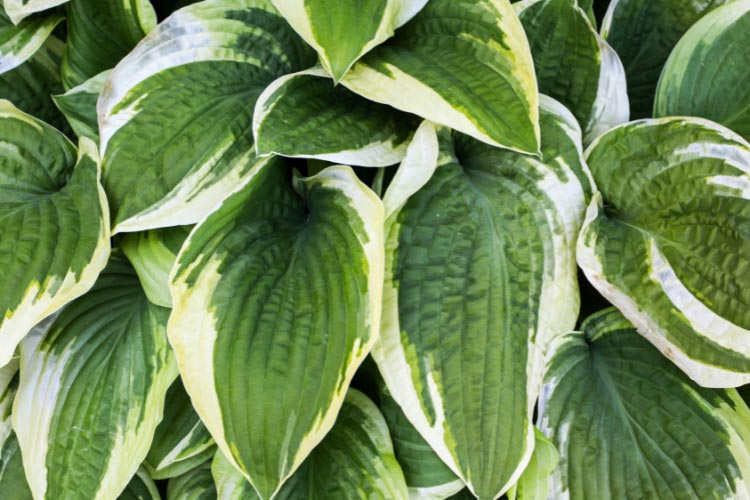
Hostas serve well as filler or background plants, but giant varieties can also serve as focal points. Some large hostas have leaves that span more than a foot wide, so your guests will simply have to appreciate their beauty. They are ideal for open corners or as free-standing features in shady areas, but you can also plant them in your garden beds alongside smaller companion plants to emphasize their size and grandeur. Sum and Substance and Empress Wu create an instant impact and pair beautifully with delicate flowers, ferns and ornamental grasses.
9. Hosta Exclusive Garden Beds
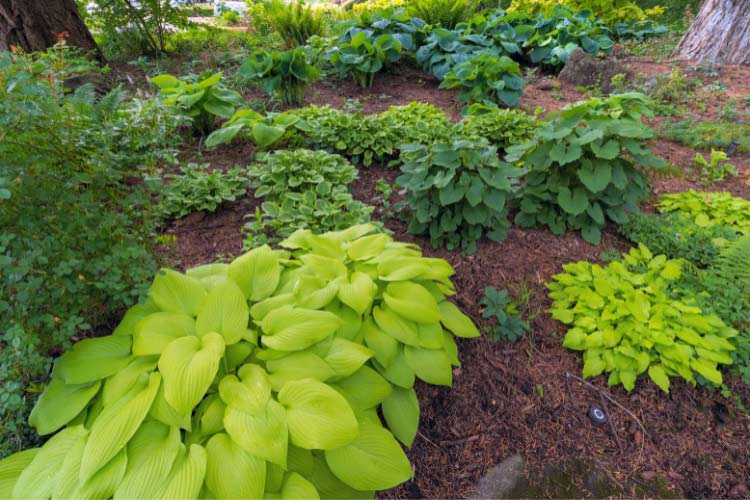
Some beautiful hosta landscaping ideas are simple and straightforward, such as dedicated hosta garden beds. If you don’t want to incorporate ferns into the mix or use your hostas as filler plants, plant them alone. They are more than capable of creating an amazing landscape without the help of other species and landscape elements.
Plant groups of the same varieties in an area or group blues, greens and golds together to create a tapestry of color and texture. In terms of placement, taller varieties at the back and shorter ones at the front will create a tiered effect, and there’s nothing stopping you from adding mulch or gravel to the beds for maintenance purposes.

Jamie is the founder of The Backyard Pros. When he was 15 years old he started working at a garden center helping people buy plants, gardening supplies and lawn care products. He has experience in real estate and is a homeowner. Jamie loves garden projects, finishing furniture and likes to share her knowledge online.




